Galapagos islands – Part I
On December 1st we left Quito for a ten day trip to the Galapagos islands. The islands, which are owned by Ecuador, have national park status and the primary reason to visit them is to see the wildlife and observe their behaviour. Wildlife experts may not agree, but to my mind this is the main attraction for the average tourist: not the variety of animals (as there really aren’t that many different types) but the fact that their behaviour around humans is so unique. They have no fear of us so you can get quite close to them, indeed at times you have to walk around them as they make it quite clear just who is in charge. On the uninhabited islands we visited, where tourists are only permitted to walk along certain trails with a guide, the iguanas and sealions who littered the path provided a constant reminder that we were mere guests in their territory.
We spent five days on the Archipel II and visited five of the main islands in the group: San Cristobal, Espanola, Floreana, Isabela and Santa Cruz. We had read online that the islands, which are all volcanic, are not that pretty and so were pleasantly surprised by the beauty of the place as well as the excellent wildlife watching.
The Archipel II is a luxury class “eco” catamaran with a seven member crew and room for sixteen guests, but as it was only the beginning of the high season, there were only eight of us on board. After flying over on a plane full of people in their sixties, we were quite pleased to see that we would be joined on our boat by six other ‘youngsters’ like ourselves, all from different countries and all good craic. The boat itself was great; although perhaps a bit lacking in atmosphere, it was quite luxurious and you couldn’t complain about the food or general service. Our average day involved waking at about 6.30am, breakfast at 7am, hopping into our small speedboat at 8am and beginning our first excursion minutes later. After a few hours we would return to the boat for lunch at 12pm and then leave again around 2pm for the afternoon activity. Activities were always either a guided walk along one of the island trails or snorkelling in the clearest water I’ve ever seen. After this second activity we’d have some afternoon refreshments and as we soaked up the rays on the sun deck, the boat would sail on to the next island. We rarely sailed at night. The sea was not very rough so neither of us were sick thankfully, and as with our boat trip in Indonesia, we both really enjoyed the hours reading and chatting with the other passengers as we motored along through the deep blue sea. Most days the weather was great and although at times it was dull or overcast, it was always warm and sunny.
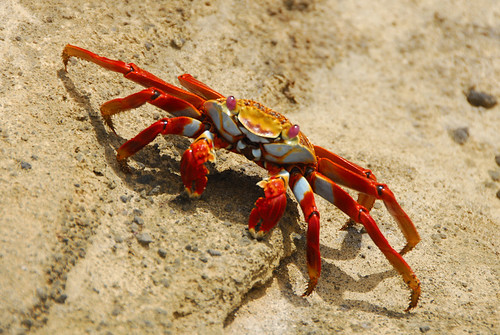
Because we were with a nice group and the wildlife and scenery was so good, we really enjoyed all our activities but were quite disappointed with our guide who was verging on rude at times and generally unenthusiastic. This is no reflection on the boat as he had never worked with them before and was just assigned to it at late notice (most of the boats don’t have their own permanent guides: they are assigned by the national park authorities). In a way, it would have been great to have a better guide who could have told us more about the endemic species and how they differ, but in another way it didn’t matter too much as unlike a safari trip, for example, the animals don’t exactly need spotting! The snorkelling everywhere was really enjoyable, but to be honest it wasn’t as good as Borneo. And of course it was a lot colder. Generally wetsuits weren’t 100% necessary but they did make it much more comfortable and enabled us to spend longer in the water (the water temperature was about the same as Ireland at its warmest).
Over the five day boat trip, we saw many sealions, iguanas, pelicans, albatross, boobies, mockingbirds, Darwin finches, tortoises, lava lizards and crabs, while underwater we saw many colourful fish, turtles (sometimes mating), rays and white tip reef sharks. There were many really cool moments, including some of these main highlights:
On Espanola, we witnessed an Albatross mating ritual, which was really very funny to watch. Originally there was three birds involved but number three soon bowed out and left the other two to it. What followed consisted of quite a bit of rapid opening, closing and touching of beaks, accompanied by lots of squawking at various volumes and pitches. They were still going strong when we eventually walked on after about twenty minutes of giggling and photo-taking.
At Shark Alley on a small island off Isabela, we saw about thirty or forty white tip reef sharks in a narrow, shallow, natural canal. We also came within about two or three meters of these reef sharks when snorkelling in Gardner Bay. After a few minutes observing these, we moved along the path to where we witnessed two angry-looking marine iguanas locked in a head-to-head battle of endurance and strength. This duel involved a lot of spitting as well as quite a bit of gum and teeth baring which we hadn’t seen before. Vicious stuff!
The best stop on our itinerary was probably Gardner Bay on Espanola. We were lucky to have a beautiful blue sky day here and the beautiful beach had about one hundred sealions on it, plus marine iguanas, sallylightfoot crabs and red lava lizards. We also spotted a rarely-seen Galapagos snake and spent a fascinating few minutes watching three mockingbirds eating the placenta of a sealion who had just given birth. The newborn pup still had the cord attached and apparently the birth had been witnessed by other tourists an hour previously while we were strolling up the beach.
The baby tortoises we saw at the Isabela Tortoise Breeding Centre were just plain cute, especially when you compare their size to their grandparents, who are huge creatures that often live well past one hundred. The work of the breeding centre is very important as the tortoise population has been decimated over the last fifty years of human habitation, primarily by the introduction of mainland species such as goats and pigs. The centre helps boost the population of various endangered species before releasing them back into the wild.
One of the most common but amusing sea-birds on the archipello is the blue-footed boobie. These oversized, dopey-looking creatures with their big blue feet, never failed to bring a smile to our faces and it’s no surprise that they’re the unofficial emblem of the islands.
After five great days on the islands, our boat landed in the most populated town in the chain, Puerto Ayora on Isla Santa Cruz. We had another five days left before we returned to the mainland and although we didn’t have very high expectations, we enjoyed the second half of our stay just as much as the first.
Tags: Archipel II, Cruise, Ecuador, Galapagos, Snorkelling, Wildlife
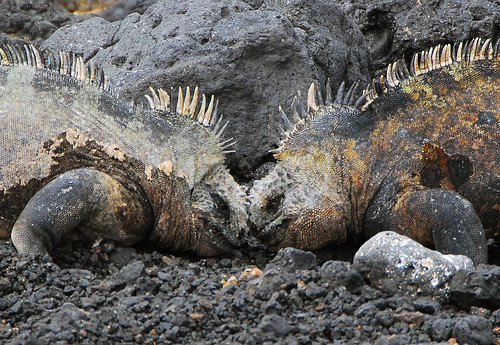
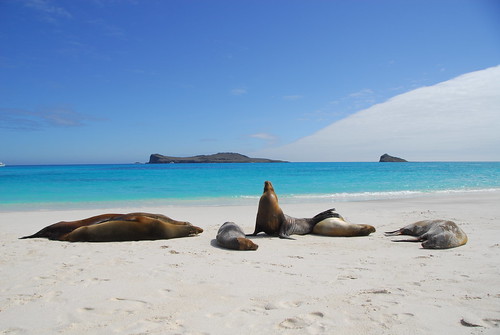
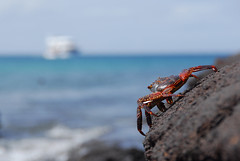
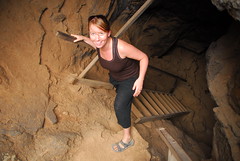
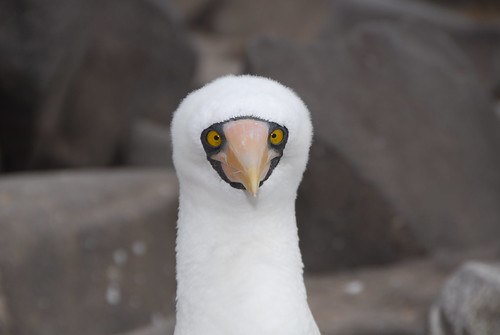

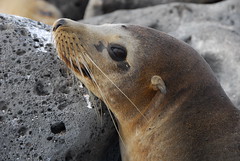
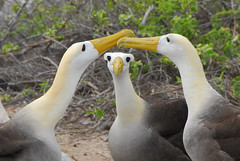

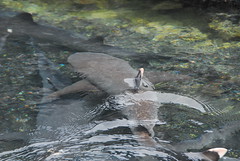
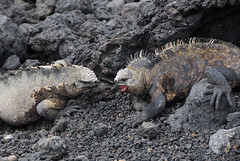
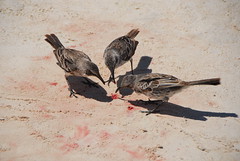
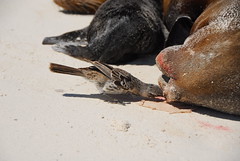
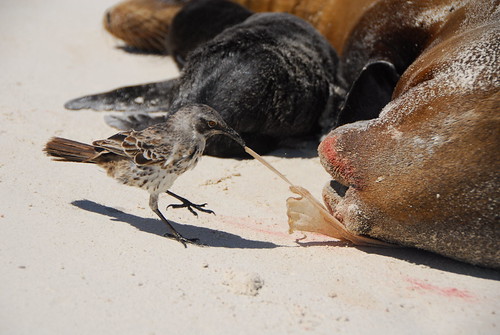
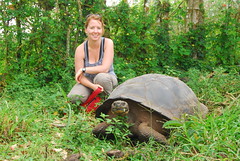
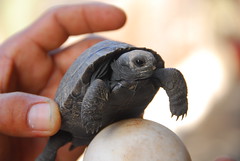
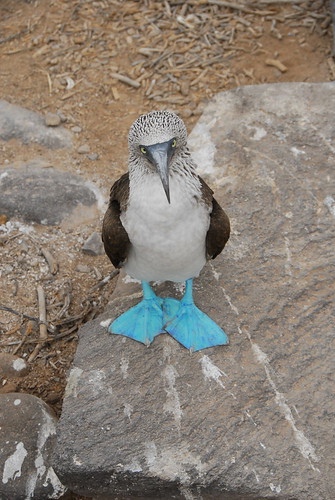
July 15th, 2009 at 2:19 am
I stumbled upon your site while doing research for the Galapagos Islands and, in particular, experiences with Archipel II (we are considering taking it for 8 days).
I’ve seen a lot of Galapagos photos scattered across various blogs and photographers’ sites and I’ve enjoyed yours the most so far.
Cheers and happy trails,
Dan
April 2nd, 2010 at 9:08 pm
Fantastic photos–I particularly liked seeing the eyes of the Sally Lightfoot crab. I visited the islands too and my memoir (Chasing a Dream on the Galapagos: A Personal Evolution) on my trip has just been published. If interested, you can find the book on the Galapagos Conservancy Web site and on Amazon.